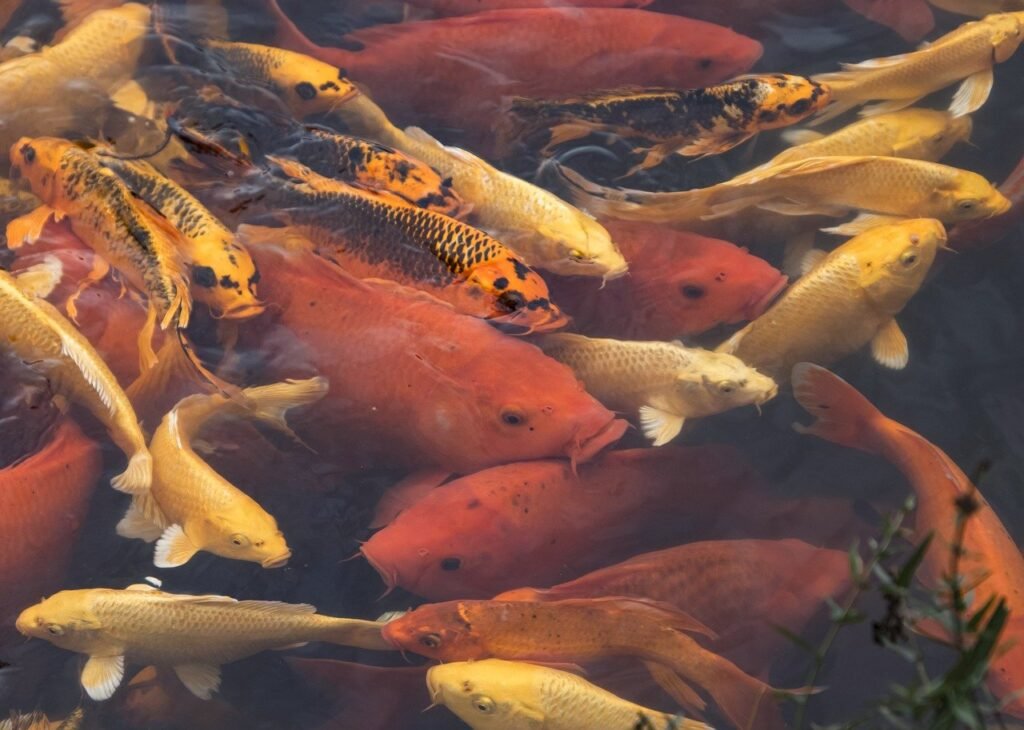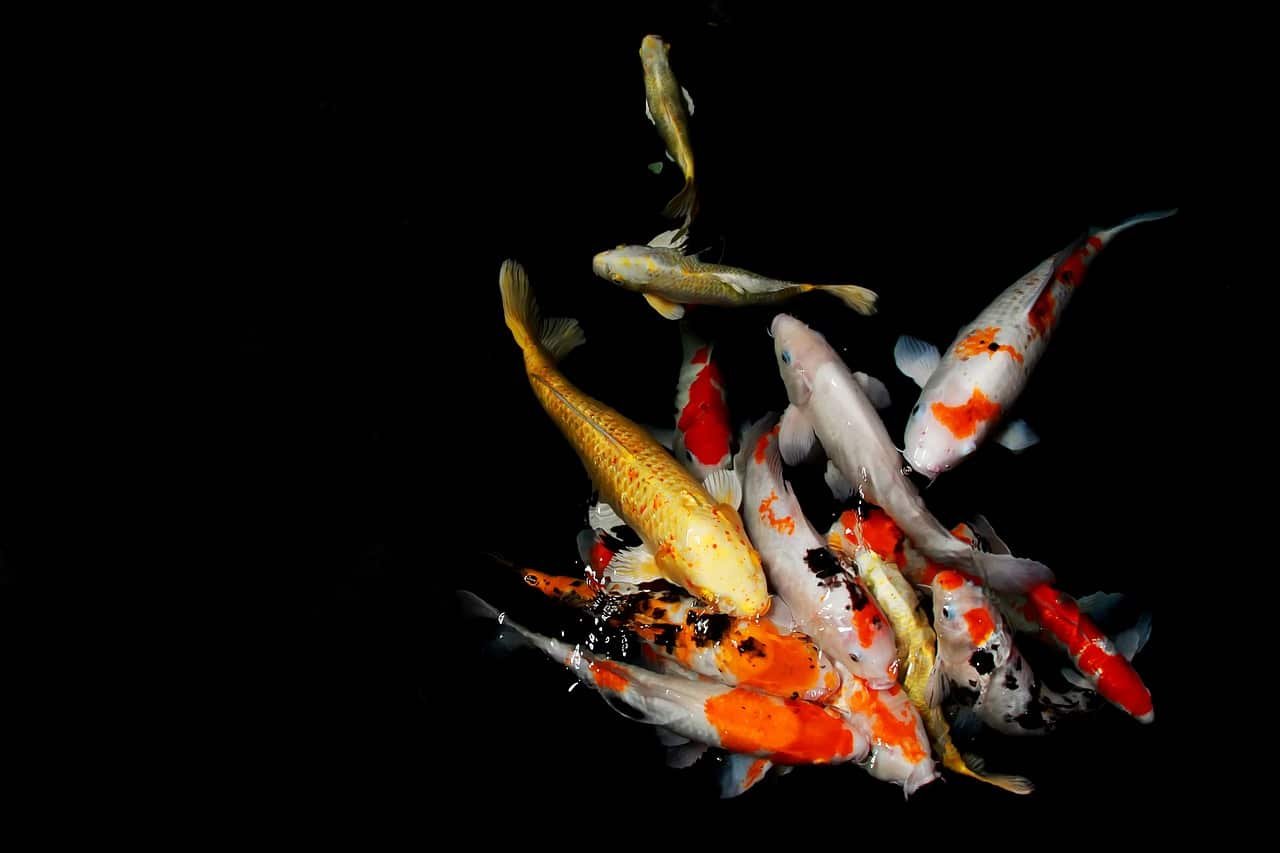Composite fish culture, also known as polyculture, is an innovative and sustainable method of aquaculture that involves raising multiple fish species together in a single pond or water body. This technique has gained significant attention due to its numerous advantages, which not only enhance fish production but also promote ecological balance and economic benefits. In this article, we will delve into the various advantages of composite fish culture, exploring how this method is transforming the aquaculture industry.
1. Efficient Utilization of Resources
One of the primary advantages of composite fish culture is the efficient utilization of available resources. Different fish species have varying feeding habits and occupy different ecological niches within the water body. By selecting compatible species with complementary feeding behaviors, farmers can maximize the use of natural food resources. For instance, surface feeders, column feeders, and bottom feeders can coexist without competing directly for food, leading to a more efficient and productive use of the pond ecosystem.
2. Enhanced Productivity
Composite fish culture significantly enhances overall fish productivity compared to monoculture systems. In a monoculture system, the carrying capacity of the pond is often limited by the specific needs of a single species. However, in a composite system, the combined carrying capacity is much higher due to the diverse feeding habits and ecological roles of the different species. This results in a higher yield per unit area, making composite fish culture a more profitable venture for farmers.
3. Improved Water Quality
Maintaining optimal water quality is crucial for the health and growth of fish. Composite fish culture contributes to better water quality management by utilizing the natural interactions between species. For example, certain fish species, such as filter feeders, help control plankton populations, reducing the risk of algal blooms that can deplete oxygen levels and harm other fish. Additionally, the presence of different species can promote nutrient cycling, helping to maintain a balanced and healthy aquatic environment.

4. Disease Control
Disease outbreaks can be a significant challenge in aquaculture, often leading to substantial economic losses. Composite fish culture can help mitigate this risk by reducing the prevalence of disease. The presence of multiple species can break the cycle of pathogen transmission, as different fish have varying susceptibilities to diseases. Moreover, certain species may act as biological control agents, preying on disease-causing organisms or parasites, thereby enhancing the overall health and resilience of the fish population.
5. Diversified Income Sources
Relying on a single species for income can be risky, especially in the face of market fluctuations or disease outbreaks. Composite fish culture offers a diversified income source by allowing farmers to harvest and sell multiple species. This diversification not only spreads economic risk but also provides a steady stream of income throughout the year. Different fish species may have varying market demands and price points, enabling farmers to cater to a broader customer base and improve their financial stability.
6. Ecological Sustainability
Sustainability is a key concern in modern aquaculture, and composite fish culture addresses this by promoting ecological balance. By mimicking natural ecosystems, this method reduces the environmental impact of fish farming. The use of multiple species can enhance the resilience of the aquatic ecosystem, making it less susceptible to disruptions. Additionally, the reduced reliance on artificial feeds and chemicals contributes to a more sustainable and environmentally friendly approach to fish farming.
7. Utilization of Different Trophic Levels
Composite fish culture leverages the concept of trophic levels to optimize the productivity of the pond. By selecting species that feed at different trophic levels, farmers can ensure that the entire food web is utilized. For instance, herbivorous fish can graze on aquatic plants, while carnivorous fish prey on smaller organisms. This multi-trophic approach not only enhances fish production but also contributes to the overall stability and health of the pond ecosystem.
8. Reduction of Feed Costs
Feed costs are a major expense in aquaculture operations. Composite fish culture can help reduce these costs by promoting the use of natural food sources within the pond. By selecting species that feed on different natural resources, farmers can minimize the need for supplementary feeding. This not only lowers operational costs but also reduces the reliance on commercial fish feeds, which can be expensive and environmentally taxing to produce.
9. Better Utilization of Pond Space
Composite fish culture allows for the optimal utilization of pond space by accommodating multiple species with different spatial requirements. Some species may prefer the deeper areas of the pond, while others thrive in shallow waters. By strategically placing species based on their spatial preferences, farmers can make the most of the available pond area, ensuring that all ecological niches are occupied and utilized effectively.
10. Increased Biodiversity
Promoting biodiversity is an integral part of sustainable aquaculture. Composite fish culture enhances biodiversity by fostering the coexistence of various species within the same environment. Increased biodiversity not only contributes to the resilience and stability of the ecosystem but also provides additional benefits such as improved aesthetic value and potential opportunities for eco-tourism. A biodiverse pond ecosystem can also attract other wildlife, creating a thriving and dynamic aquatic habitat.
11. Economic and Social Benefits
The adoption of composite fish culture can bring about significant economic and social benefits, particularly in rural and developing regions. This method of aquaculture can generate employment opportunities, improve food security, and contribute to the local economy. By empowering small-scale farmers with the knowledge and resources to implement composite fish culture, communities can achieve greater self-sufficiency and resilience, leading to improved livelihoods and overall well-being.
Conclusion
Composite fish culture stands out as a highly advantageous and sustainable approach to aquaculture. By efficiently utilizing resources, enhancing productivity, improving water quality, and promoting ecological balance, this method offers a comprehensive solution to many of the challenges faced by traditional fish farming practices. Furthermore, the economic and social benefits of composite fish culture make it an attractive option for farmers and communities alike. As the demand for sustainable and efficient food production continues to grow, composite fish culture is poised to play a crucial role in the future of aquaculture.
Read more : The Disadvantages of Composite Fish Culture and How to Overcome Them
Frequently Asked Questions (FAQs) About Composite Fish Culture
1. What is composite fish culture?
Composite fish culture, also known as polyculture, is a method of aquaculture where multiple species of fish are raised together in a single pond or water body. This technique leverages the different feeding habits and ecological roles of various fish species to maximize resource utilization and improve productivity.
2. What are the benefits of composite fish culture?
Composite fish culture offers numerous benefits, including:
- Efficient utilization of natural resources.
- Enhanced overall fish productivity.
- Improved water quality.
- Better disease control.
- Diversified income sources.
- Ecological sustainability.
- Reduced feed costs.
- Increased biodiversity.
3. How does composite fish culture improve water quality?
In composite fish culture, the presence of different fish species helps maintain water quality by promoting nutrient cycling and controlling plankton populations. Filter feeders, for example, can reduce the risk of algal blooms, while other species contribute to a balanced and healthy aquatic environment.
4. What types of fish are suitable for composite fish culture?
Suitable fish species for composite fish culture are selected based on their feeding habits and ecological niches. Commonly used species include surface feeders like rohu, column feeders like mrigal, and bottom feeders like common carp. Each species plays a distinct role, ensuring efficient resource utilization.
5. How does composite fish culture enhance productivity?
By raising multiple species with different feeding habits and ecological roles, composite fish culture maximizes the carrying capacity of the pond. This results in a higher overall yield per unit area compared to monoculture systems, where only one species is raised.
6. Can composite fish culture help in disease control?
Yes, composite fish culture can help control diseases by breaking the cycle of pathogen transmission. Different species have varying susceptibilities to diseases, and some species may even act as biological control agents, preying on parasites or disease-causing organisms.
7. Is composite fish culture economically viable?
Composite fish culture is economically viable due to its higher productivity, diversified income sources, and reduced feed costs. By harvesting and selling multiple species, farmers can spread economic risk and achieve a steady income throughout the year.
8. How does composite fish culture promote ecological sustainability?
Composite fish culture mimics natural ecosystems, promoting ecological balance and reducing the environmental impact of fish farming. The use of multiple species enhances the resilience of the aquatic ecosystem and reduces the reliance on artificial feeds and chemicals.
9. What are the feed requirements in composite fish culture?
Feed requirements in composite fish culture are lower than in monoculture systems because different species utilize natural food resources within the pond. This reduces the need for supplementary feeding and lowers operational costs.
10. How do I start a composite fish culture system?
To start a composite fish culture system, follow these steps:
- Select compatible fish species: Choose species with complementary feeding habits and ecological roles.
- Prepare the pond: Ensure the pond is suitable for fish farming, with proper depth, water quality, and aeration.
- Stock the pond: Introduce the selected fish species in appropriate ratios.
- Manage feeding: Monitor natural food availability and provide supplementary feed if necessary.
- Monitor water quality: Regularly check water quality parameters and take corrective actions as needed.
- Harvest and market fish: Harvest the fish based on their growth and market demands.
11. What are the common challenges in composite fish culture?
Common challenges in composite fish culture include maintaining water quality, managing fish health, and ensuring proper species ratios. Effective monitoring and management practices are essential to address these challenges and achieve successful outcomes.
12. Can composite fish culture be practiced in small-scale farms?
Yes, composite fish culture can be practiced in small-scale farms. It is a flexible and scalable approach that can be adapted to different farm sizes and resources, making it accessible to small-scale and subsistence farmers.
13. How does composite fish culture contribute to food security?
Composite fish culture contributes to food security by increasing fish production and providing a diversified source of income for farmers. The higher yield and steady income help ensure a reliable supply of nutritious fish, benefiting both farmers and consumers.
14. Are there any environmental concerns with composite fish culture?
When properly managed, composite fish culture has minimal environmental concerns. It promotes ecological sustainability by mimicking natural ecosystems and reducing the reliance on artificial inputs. However, careful monitoring and management are necessary to prevent issues such as water pollution and habitat degradation.
15. What role does biodiversity play in composite fish culture?
Biodiversity is crucial in composite fish culture as it enhances ecosystem stability and resilience. The presence of multiple species with different ecological roles helps maintain a balanced and healthy aquatic environment, contributing to the overall success and sustainability of the fish farming system.
By understanding and addressing these frequently asked questions, farmers and stakeholders can better appreciate the advantages and practical aspects of composite fish culture, leading to more successful and sustainable aquaculture practices.
Discover more from EMMOCEB
Subscribe to get the latest posts sent to your email.






